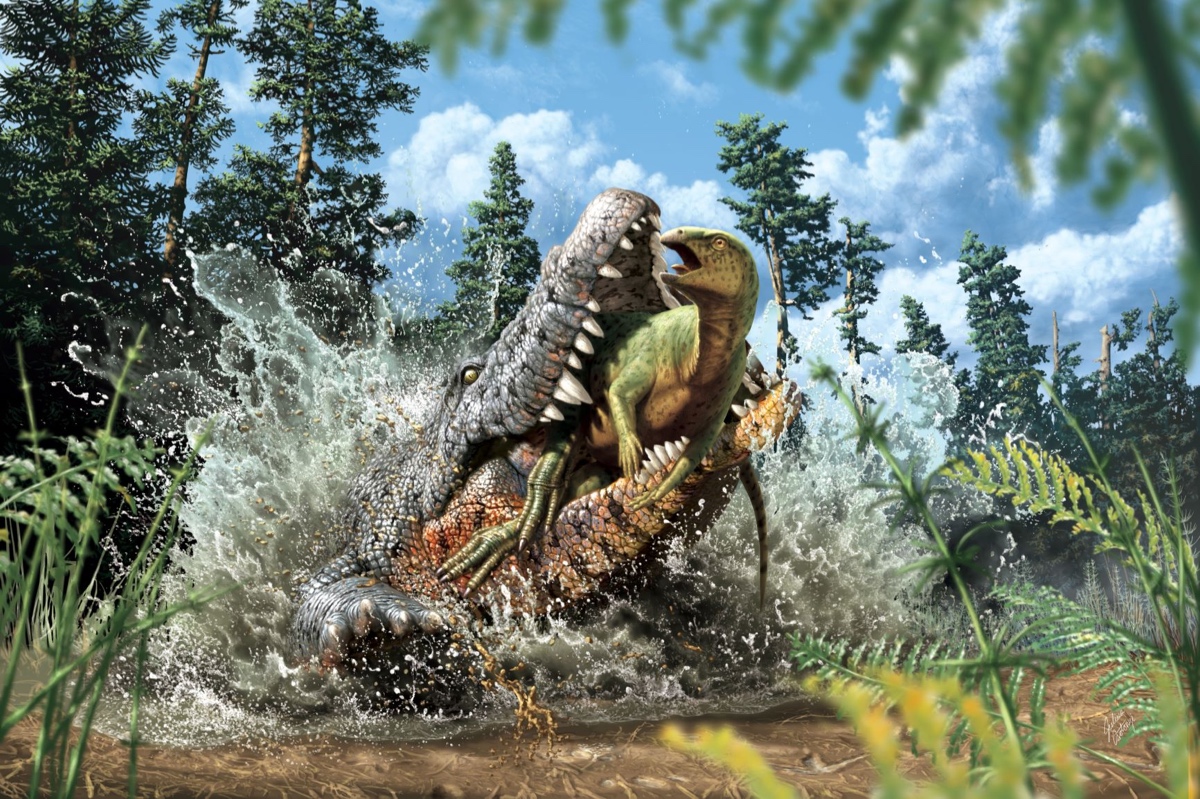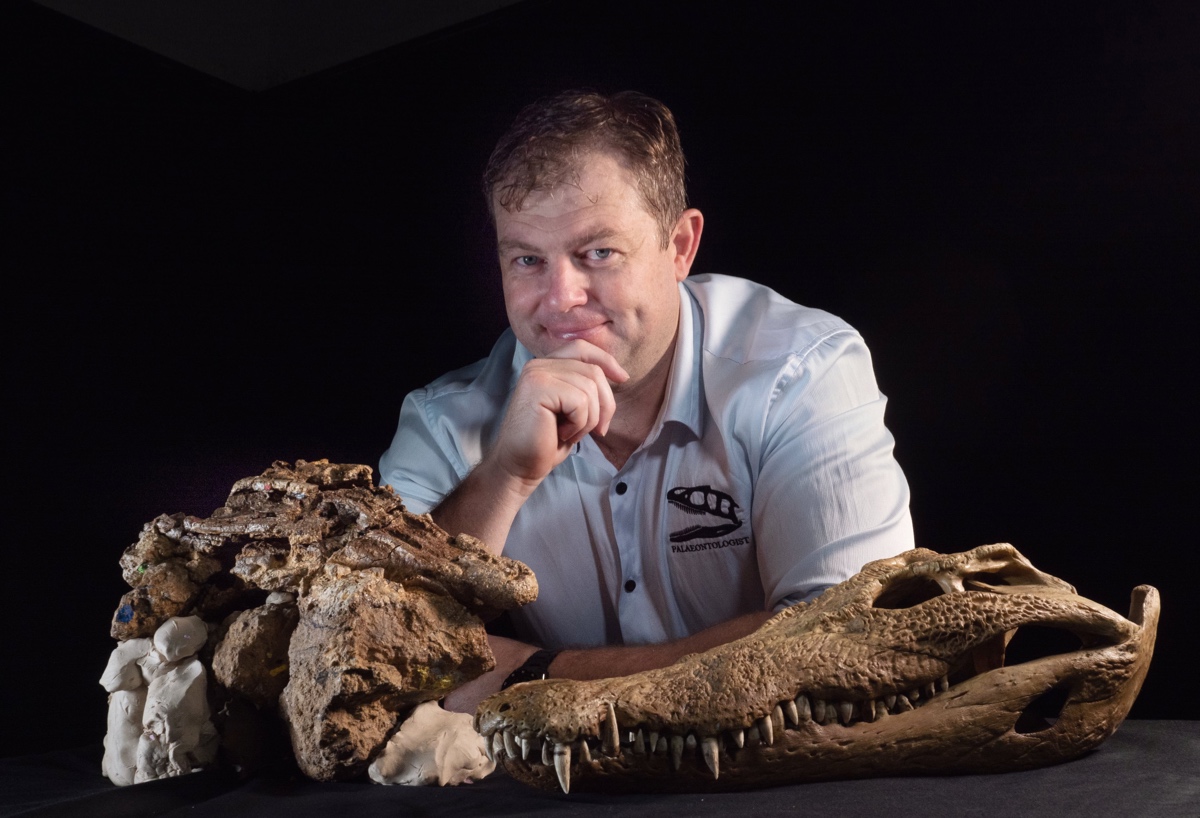Australian palaeontologists have revealed that dinosaurs were once on the menu of crocodiles.
While piecing together the remains of a 93 million-year-old extinct relative of modern crocodiles, a team led by UNE postdoctoral researcher Dr Matt White found the remains of a juvenile dinosaur in the crocodile’s gut region.
“Crocodiles have the most potent stomach acids in the animal kingdom, so the discovery of fossilised gut contents in this new fossil crocodile was not only surprising but it also revealed that the crocodile likely died shortly after its last meal,” Dr White said.
The discovery is not only exciting because of the glimpse it provides into the deep past of life (and sudden death) on Earth, but because the find was made after the researchers took six years to piece together the shattered fragments of what proved to be a previously undescribed species of extinct crocodile.
The fossilised crocodile and its prey were preserved in a boulder that was simultaneously unearthed and shattered by a front-end loader during an Australian Age of Dinosaurs dig near Winton, in outback Queensland, in 2011.
Dr White and Dr Joseph Bevitt from the Australian Nuclear Science and Technology Organisation (ANSTO) used the Australian Synchrotron, a hugely powerful form of X-ray machine the size of a football field, to assess how to piece the boulder back together and show what it contained.
It took six painstaking years of work to complete the task, “but the results did not disappoint,” Dr White said.
The ancient crocodile that came into view through the synchrotron, which fires beams of light a million times brighter than the sun, was conferred with the name Confractosuchus sauroktonos.

Image: Artist's impression of an ancient crocodile eating a dinosaur. Credit: Julius Csotonyi
Confractosuchus translates as ‘broken crocodile’, in reference to the concretion that was hit by the front-end loader and subsequently shattered. The species name, sauroktonos, translates as ‘dinosaur killer’.
The cluster of small bones that the synchrotron revealed in the crocodile’s gut region belonged to a herbivorous dinosaur about the size of a chicken.
“We know it was juvenile as the vertebrae (neural spines and centrum) had not fused as they typically do in adults” said Dr White. The high-resolution scans even revealed bite marks on one of the bones.
Popular culture has come to paint dinosaurs as the predators of human nightmares, but Dr White said the find showed that dinosaurs were not always at the top of the food chain.
“Dinosaurs came in all shapes and sizes,” Dr White said. “They were part of a complex food web: many were predators, but they were also eaten by mammals, snakes, and crocodile-relatives.”
The new research was published in Gondwana Research: White MA, BellPR, CampioneNE, SansaloneG, BroughamT, BevittJJ, MolnarRE, CookAG, WroeS, ElliottDA. 2022. Abdominal contents reveal Cretaceous crocodyliforms ate dinosaurs. Gondwana Research.
Research was completed at the University of New England Armidale in collaboration with Australian Nuclear Science and Technology and the Australian Age of Dinosaurs Museum.
The specimens are on display at the Australian Age of Dinosaurs Museum in Winton, QLD.


